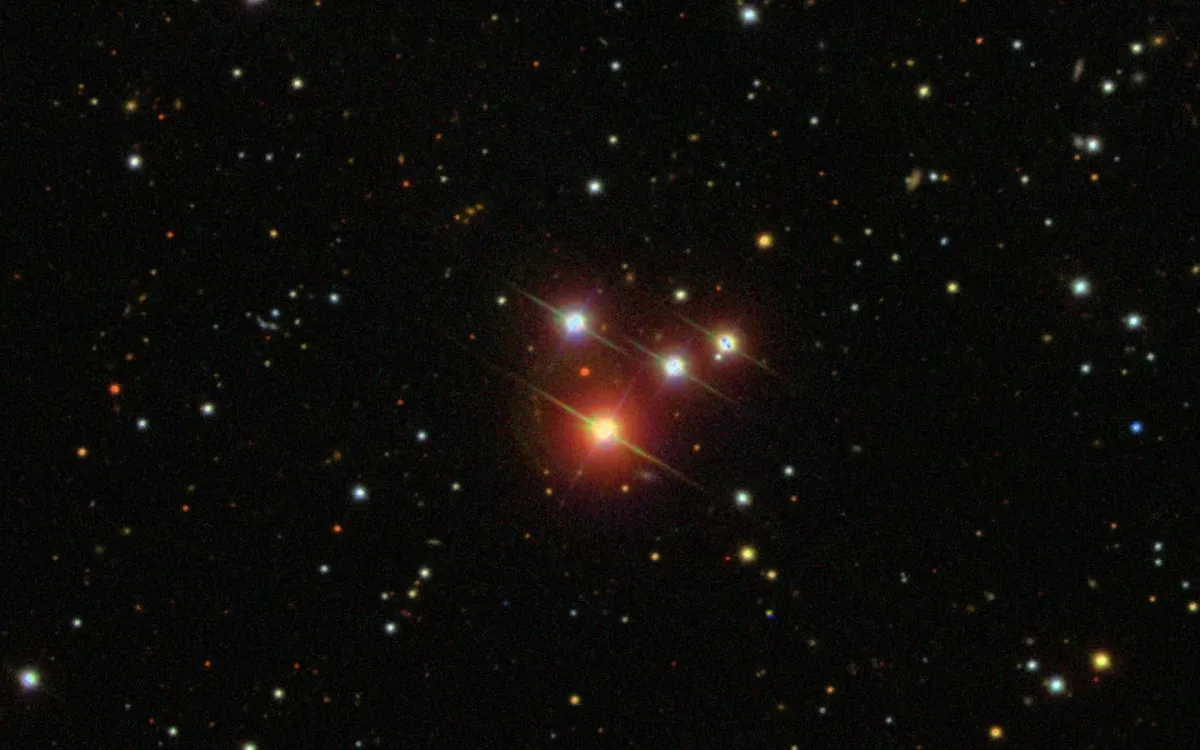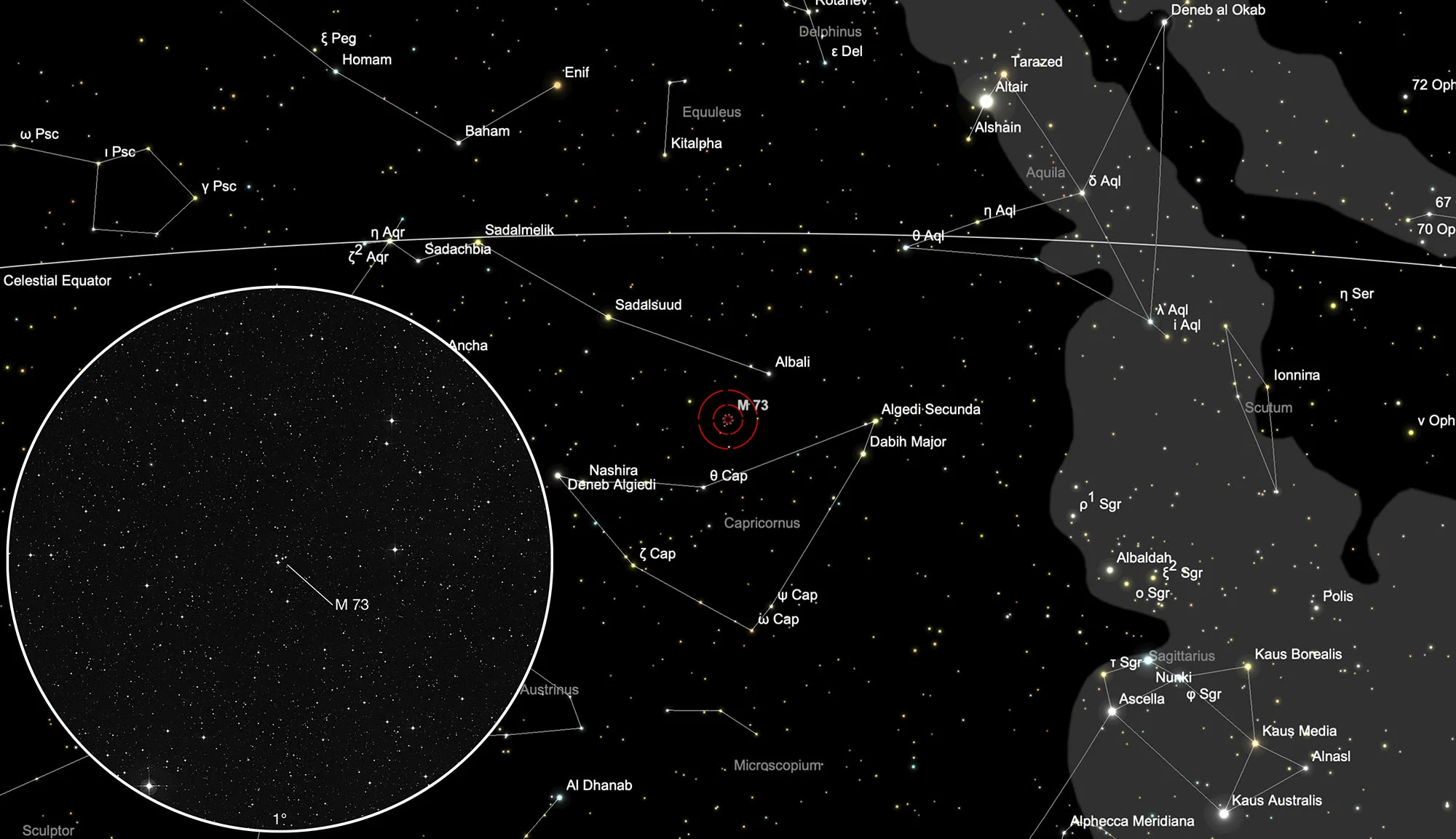Asterism Messier 73

History
Charles Messier discovered M 73 on October 4th and 5th, 1780 and wrote: «Clusters of three or four small stars, which at first glance look like a nebula, contain some nebula: the cluster is on the parallel of the previous one [M 72]: the position was determined with the same star ν Aquarii.» [281]
John Herschel listed M 73 in his «General Catalogue» as GC 4617 and noted: «Cluster very doubtful; extremely poor; very little compressed; no nebula.» [467]
Physical Properties
This is neither a real star cluster nor a multiple star system, but a random group of four stars of 10th to 12th magnitude, which, according to measurements by the Gaia space probe, over distances of 321 pc to 706 pc (1047 to 2303 light years) stand scattered. [145]
Finder Chart
M 73 is located in the constellation Aquarius (Aquarius). It is best to look for M 72 first. About 1° 20' east of it is M 73. The best observation time is April to January.
